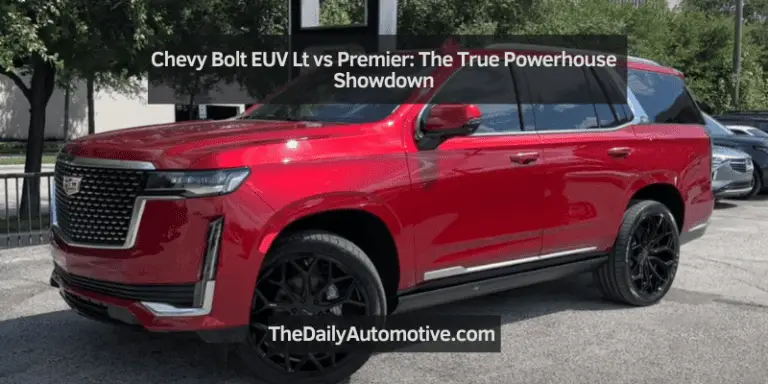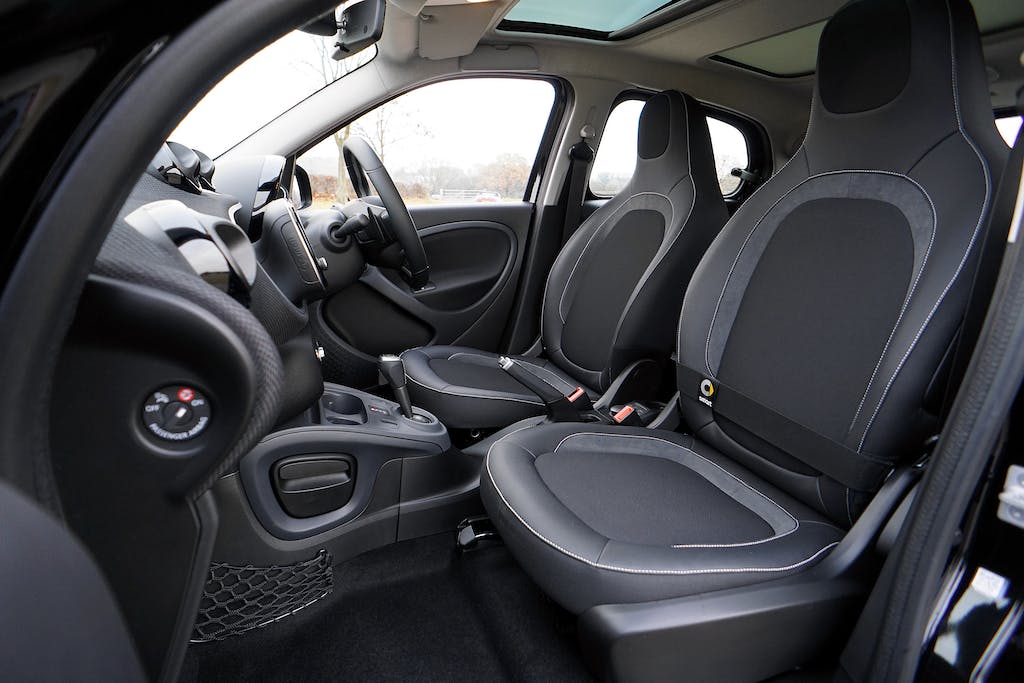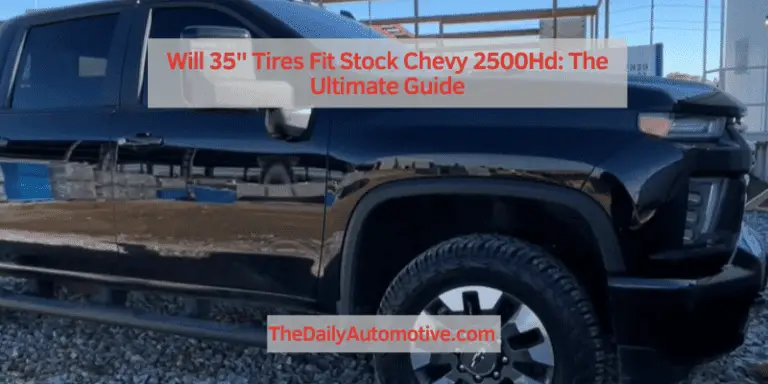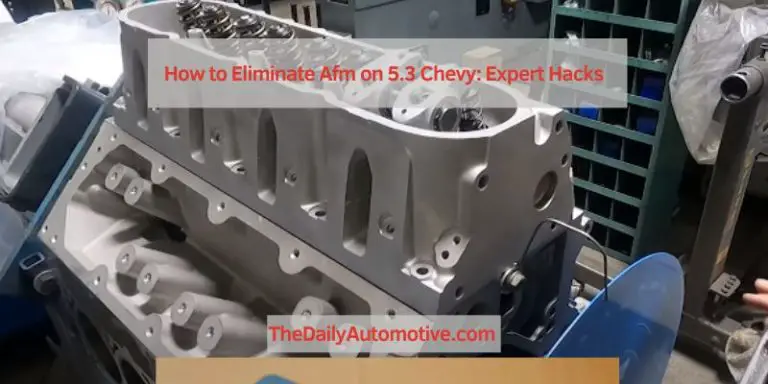Are All Chevy 350 Blocks the Same? Discover the Hidden Differences!
No, not all Chevy 350 blocks are the same. Chevrolet, the renowned automobile manufacturer, has produced multiple variations of the Chevy 350 block.
These variations include different generations, casting designs, and specifications, resulting in distinct characteristics for each block. It is essential to understand these nuances to ensure compatibility and optimal performance when working with Chevy 350 engines. By delving into the details of the various iterations, we can gain a comprehensive understanding of the differences and similarities present in these blocks.
So, let’s explore the world of Chevy 350 blocks and uncover the factors that set them apart from one another.
Understanding The Chevy 350 Engine
Chevy 350 blocks vary in terms of design and specifications. Understanding the differences between them is crucial for engine enthusiasts and builders alike.
Introduction to the Chevy 350
The Chevy 350 engine is an iconic power plant that has been used in various Chevrolet vehicles for decades. Known for its reliability and performance, the Chevy 350 has become a popular choice among car enthusiasts and mechanics alike. But are all Chevy 350 blocks the same? In this blog post, we will delve into the details of the Chevy 350 engine, examining its different variations and helping you understand what sets them apart.
An Overview of the Chevy 350 Engine
The Chevy 350 engine is a versatile and durable V8 engine that has been produced in multiple versions over the years. It has a displacement of 350 cubic inches, hence the name. While the fundamental design principles remain consistent throughout these different variations, there are certain aspects that can differ.
One key component that can vary between Chevy 350 blocks is the casting number. This number is typically found on the engine block and provides important information such as the year of production and specific features of the engine. Casting numbers can help identify whether a Chevy 350 block is from a truck or car, the horsepower rating, and any additional features it may have.
Another factor that can vary between Chevy 350 blocks is the engine code. Engine codes are alphanumeric designations that help identify different versions of the engine. These codes can provide additional information about the engine, such as the year of production, intended application (car or truck), and any specific performance upgrades.
Additionally, the Chevy 350 engine has undergone various updates and improvements over the years. These updates can include changes to the cylinder head design, fuel delivery system, ignition system, and other components. These improvements often result in increased power, improved fuel efficiency, and enhanced overall performance of the engine.
To help you understand the differences between Chevy 350 blocks, here is a breakdown of some of the major variations:
1. Gen 1 Chevy 350: This is the original version of the Chevy 350 engine, which was introduced in 1967. It features a two-bolt main journal design and was produced with both provisions for a mechanical fuel pump and an external oil pump.
2. Gen 2 Chevy 350: Introduced in the early 1980s, the Gen 2 Chevy 350 engine incorporated several advancements over the Gen 1 version. It featured a one-piece rear main seal, improved cylinder head design, and provisions for a hydraulic roller camshaft.
3. Gen 3 Chevy 350: The Gen 3 Chevy 350 engine, also known as the Vortec 350, was introduced in the mid-1990s. It featured significant updates to the cylinder head design, resulting in improved airflow and combustion efficiency.
It is important to note that while these variations may have different features and specifications, they can all be considered to be Chevy 350 blocks. The overall design and general characteristics of the engine remain consistent throughout these different versions.
Understanding the differences between Chevy 350 blocks can be crucial when it comes to restoring or building a Chevy 350 engine. By identifying the specific features and variations of the engine, you can ensure that you are selecting the right components and achieving the desired performance.
In conclusion, while all Chevy 350 blocks share the same general design and characteristics, there are distinct variations that can differentiate them. From casting numbers to engine codes and updates over the years, understanding these differences can help you make informed decisions when it comes to working with the Chevy 350 engine. So whether you’re looking to restore a classic Chevy or build a high-performance machine, knowing the specific nuances of the Chevy 350 engine is essential.
Key Differences In Chevy 350 Blocks
When it comes to Chevy 350 blocks, there are several key differences that can greatly impact the performance and capabilities of the engine. From variations in casting materials to variances in main cap design, each aspect plays a crucial role in determining the overall performance of the block. In this article, we will explore the essential differences in Chevy 350 blocks, covering casting materials, cylinder bore and stroke variations, as well as main cap design variances.
Differences In Casting Materials
One of the primary differences to consider when evaluating Chevy 350 blocks centers around the casting materials used. Different casting materials offer varying levels of strength, durability, and heat dissipation, which can greatly impact the performance and longevity of the engine. Here is a breakdown of the core casting materials commonly found in Chevy 350 blocks:
| Material | Advantages | Disadvantages |
|---|---|---|
| Cast Iron | Durable, excellent heat dissipation | Heavier, restricts airflow |
| Aluminum | Lightweight, enhances airflow | Less durable, requires greater maintenance |
Variations In Cylinder Bore And Stroke
Another significant factor contributing to the differences in Chevy 350 blocks lies in the variations in cylinder bore and stroke dimensions. These measurements directly affect the engine’s displacement, power output, and torque characteristics. Here are some common cylinder bore and stroke variations:
- Standard Bore and Stroke: This refers to the factory specifications and is the most common configuration.
- Overbore and Stroker Kits: By enlarging the cylinder bore or increasing the stroke length, engine builders can achieve greater displacement and potential power gains.
Variances In Main Cap Design
The design of the main caps in Chevy 350 blocks also varies, affecting the block’s overall strength and rigidity. Here are the main cap design variances to be aware of:
- Two-Bolt Main Caps: These are the standard configuration found in most factory-built Chevy 350 blocks. While suitable for most applications, they may not provide optimal strength for high-performance engines.
- Four-Bolt Main Caps: Four-bolt main caps offer increased strength and stability to better handle the stresses of high-performance applications. This design is often preferred by performance enthusiasts and engine builders seeking maximum reliability.
By understanding the key differences in casting materials, cylinder bore and stroke variations, and main cap design variances, you can make informed decisions when selecting a Chevy 350 block that best suits your specific needs and performance goals. Whether you prioritize durability, power output, or both, weighing these factors will ensure your engine performs at its peak.
Implications For Performance And Compatibility
When it comes to building a high-performance engine, understanding the implications of different Chevy 350 blocks is crucial. The block, which forms the foundation of the engine, determines its overall power output, torque, and compatibility with various components. In this article, we will explore the effects on power output and torque as well as the compatibility of different Chevy 350 blocks with various components.
Effects On Power Output And Torque
The choice of Chevy 350 block can have a significant impact on the engine’s power output and torque. Different blocks may feature variations in factors such as bore size, deck height, and cylinder head compatibility, ultimately influencing the overall performance of the engine.
A larger bore size, for instance, allows for increased airflow and larger valves, which can result in improved power output. On the other hand, a smaller bore size may limit the engine’s potential for power gains. Similarly, the choice of deck height affects the compression ratio, with higher deck heights yielding higher compression and potentially more power.
Compatibility with different cylinder heads is another important consideration. The design and size of the heads can significantly impact the air and fuel flow, as well as the combustion efficiency, which directly affects power and torque. Thus, it is essential to ensure that the chosen block can accommodate the desired cylinder heads for optimal performance.
Compatibility With Different Chevy 350 Components
Aside from power output and torque, compatibility with various components is crucial when selecting a Chevy 350 block. Different blocks may have variations in oil pan bolt patterns, motor mount locations, and bellhousing bolt patterns, among other factors. Ensuring compatibility with these components is essential for a hassle-free installation and integration of the engine into a vehicle.
In addition, the choice of block can impact the compatibility with other engine components such as crankshafts, rods, and pistons. Some blocks may have specific requirements or clearances that must be considered when selecting these components. Failure to ensure compatibility can result in issues such as interference, poor performance, or even engine damage.
Moreover, it is important to consider the intended use of the engine when selecting a block. For example, if the engine will be used in a high-performance application, a block specifically designed for performance purposes may be more suitable, featuring reinforced main caps and thicker cylinder walls to handle the increased stresses.
In summary, when it comes to Chevy 350 blocks, there are variations that can have significant implications for performance and compatibility. Understanding the effects on power output, torque, and compatibility with different components is crucial for building a well-performing engine that meets the desired requirements.
Conclusion
To sum up, not all Chevy 350 blocks are created equal. Each block has its distinctive features, such as variations in casting and materials. It’s crucial for automotive enthusiasts to understand these differences when considering the compatibility and performance of their engines.
By doing research and consulting experts, individuals can make informed decisions about the best Chevy 350 block that suits their specific needs and preferences. So, don’t rush into assumptions, take the time to explore options for an optimal Chevy 350 block experience.








